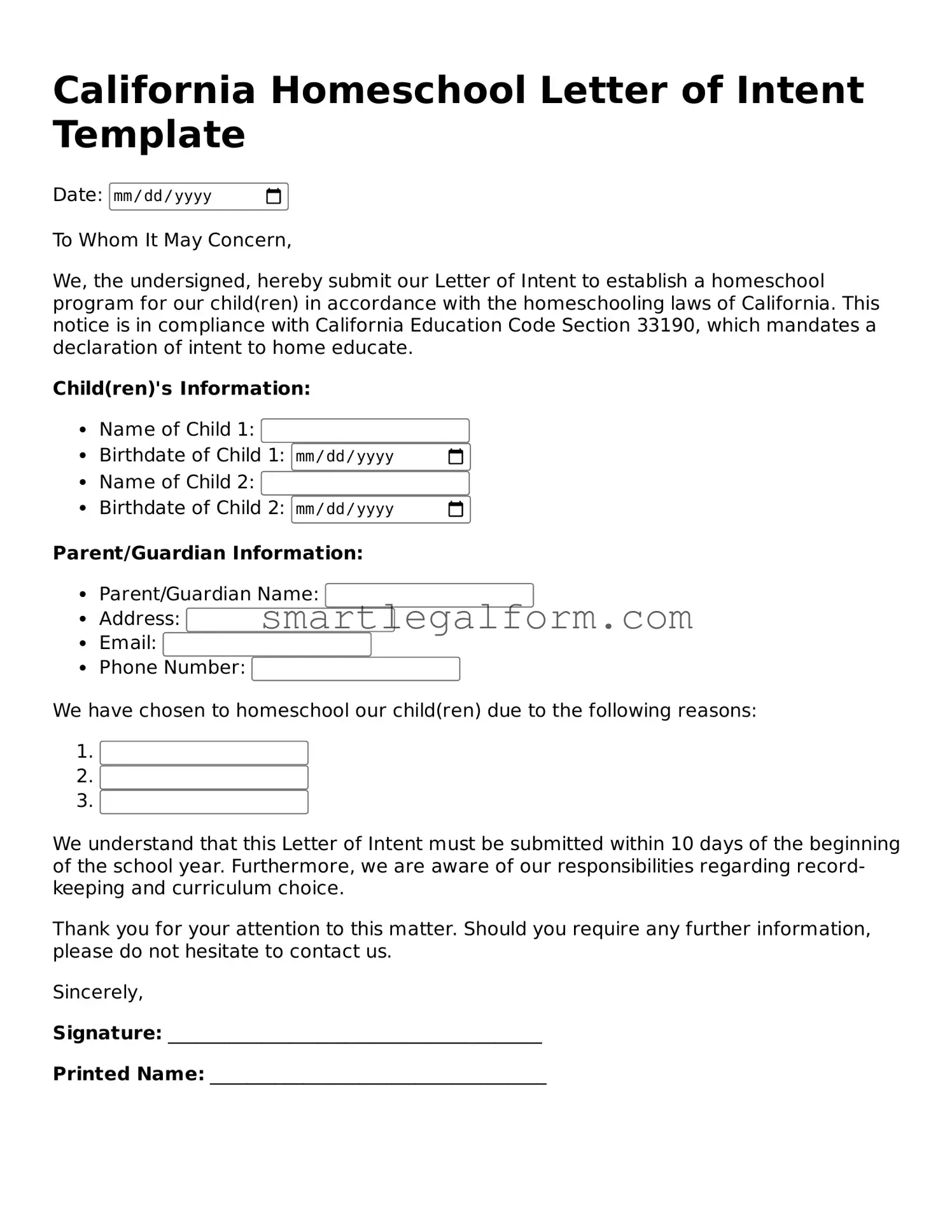Printable California Homeschool Letter of Intent Document
The California Homeschool Letter of Intent form is a crucial document that parents must submit to formally declare their intention to homeschool their children. This form not only outlines the educational plan but also ensures compliance with state regulations. If you're ready to take this important step, fill out the form by clicking the button below.
Fill Out Your Form Online
